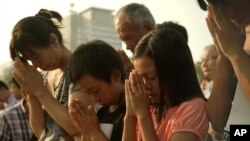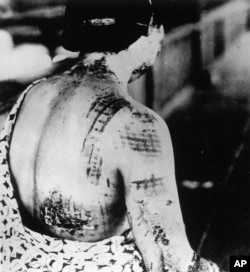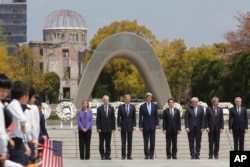In 1945, President Harry S. Truman was weighing a very frightening decision: whether or not to be the first sitting president to use nuclear warfare to end World War II.
The target was Japan. The city of Hiroshima was first. Later, a cloud of nuclear dust rose above Nagasaki as another atomic bomb was dropped by the United States military.
On the making such a fateful decision, Truman said:
"The atom bomb was no 'great decision.' It was merely another powerful weapon in the arsenal of righteousness."
For the people of Hiroshima, it was indeed a "great'' decision, one that might be more accurately described as traumatic. About 140,000 people died that day, August 6, 1945.
Fast forward 71 years, and history was made yet again when the White House announced that President Barack Obama would become the first sitting president to visit Hiroshima.
Last month, Secretary of State John Kerry also made history, becoming the first sitting secretary of state to visit Hiroshima.
Sorry?
Hanging over any American involvement with Japan's two cities shattered by nuclear warfare is the very sensitive issue of an apology by the United States government. The White House Deputy National Security Adviser for Strategic Communications, Ben Rhodes, made a veiled reference to that in a blog he posted on Medium:
"On May 27, the President will visit the Hiroshima Peace Memorial Park, a site at the center of the city dedicated to the victims of the atomic bombing, where he will share his reflections on the significance of the site and the events that occurred there. He will not revisit the decision to use the atomic bomb at the end of World War II. Instead, he will offer a forward-looking vision focused on our shared future."
VOA's Brian Padden reports from Hiroshima:
Today, an estimated 1.6 million appear to be living normal lives in both Hiroshima and Nagasaki. But are the cities themselves still radioactive? Most experts say the short answer is “no.”
Why?
The nuclear bombs were detonated high enough in the air to dramatically reduce what is known as “radioactive fallout.”
Both cities have rebuilt, but they remain symbols of the danger of nuclear weapons, and both features museums that draw thousands of visitors each year.








